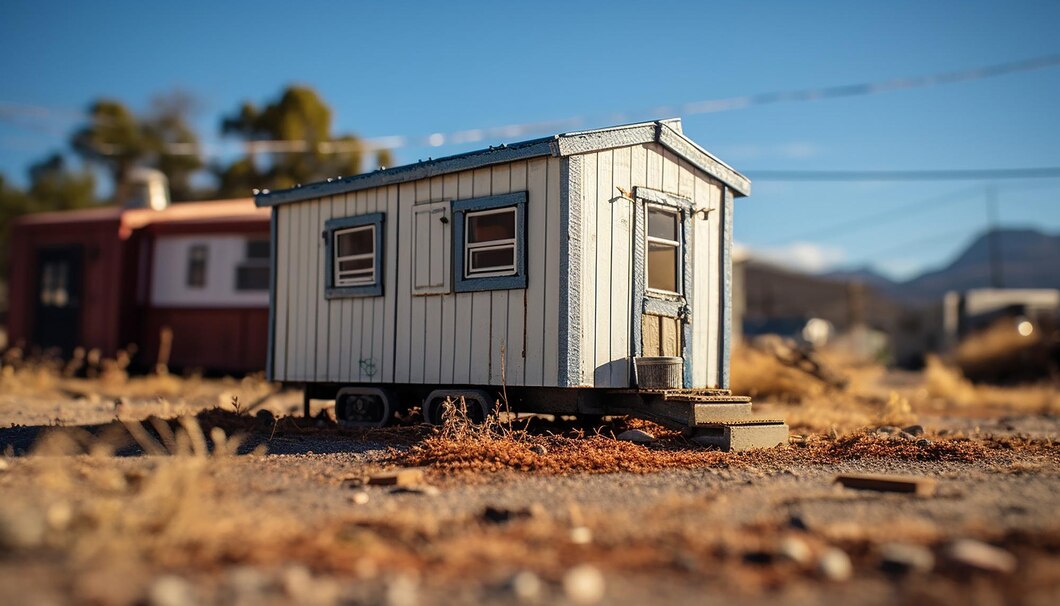Demolishing a mobile home may feel daunting at first. Not only must the structure be taken down carefully to avoid damaging nearby property but it must be done safely too. But, Can You Demolish a Mobile Home Without Damage the Property? – With the appropriate approach in mind, we will explain how best to go about demolishing a mobile home while leaving its environment intact in this blog!
Why Consider Demolishing a Mobile Home?
Mobile homes also live their life cycle; as time progresses they may become outdated, unsafe, and inhabitable – three major causes for their demolition:
- Structural damages that cannot be repaired.
- Locating and purchasing your new home.
- A new project awaits.
- Local government law.
All demolition should be conducted safely to minimize further property damage.
Read more: Mobile Home Removal
How to Safely Demolish a Mobile Home
1. Planning
A good demolition plan begins with knowledge of local laws and regulations surrounding mobile home removal; some locations require permits before beginning. Next comes the demolition strategy. Will you dismantle it piecemeal or use heavy machines? Depending on its size and budget constraints, your decision here could vary considerably.
Expert Advice: For work that you feel you cannot complete on your own, consider seeking professional assistance.
Read more: What You Must do Before Carrying Out Demolition?
2. Disconnect Utilities
Before undertaking demolition work, all utilities like electricity, water, gas, and sewer lines should be disconnected to mitigate the risk of accidents or harm to nearby systems. Failure to disconnect may result in costly accidents or damages to systems.
Key Steps to Take:
- Contact utility companies.
- Arrange professional disconnection.
- Verify that all lines have been safely cut.
3. Locate and Remove Hazardous Substances
Mobile homes may contain asbestos, lead paint, or old insulation which poses risks to both people and the environment. Their safe disposal will help safeguard both populations.
What You Should Do:
- Identify all hazardous materials.
- Secure yourself by wearing protective gear
- Follow local disposal requirements.
4. Equipment Used
To minimize damage to surrounding properties and preserve them for reuse later on. Heavy machined excavators may speed up the demolition process but will need professional operators’s assistance for use; manual dismantling offers more control and can speed it up too!
Tip: Install protective barriers around your property to reduce accidental damage.
5. Protecting Surrounding Areas
Establish a buffer zone around your mobile home to help ensure no property damage takes place, including:
- Clean up debris before beginning demolition work.
- Tarps can help protect plants or landscaping.
- Marking boundaries to assist machine operators.
Inspections during the demolition process can also help identify risks early.
What Are My Next Steps After Demolition?
Once a mobile home has been demolished, all debris must be cleared away before starting cleanup. Materials like metal and wood can be recycled to reduce waste while potentially saving both money and resources. Once this step is completed, clear away any debris and assess for damages to determine their severity. In cases where disruption was minimal, your property could soon be ready for future use.
Read more: What is it Called When You Demolish a Mobile Home?
Final Thoughts
Can You Demolish a Mobile Home Without Damage the Property? – Demolition of mobile homes requires careful planning and execution if they are to be demolished without damaging neighboring properties or people. By following these steps and placing safety as a top priority, work will eventually be accomplished.
When in doubt, seek professional assistance; doing so could save both time and effort – not to mention stress! Take this process step-by-step so as to protect property during its implementation.






